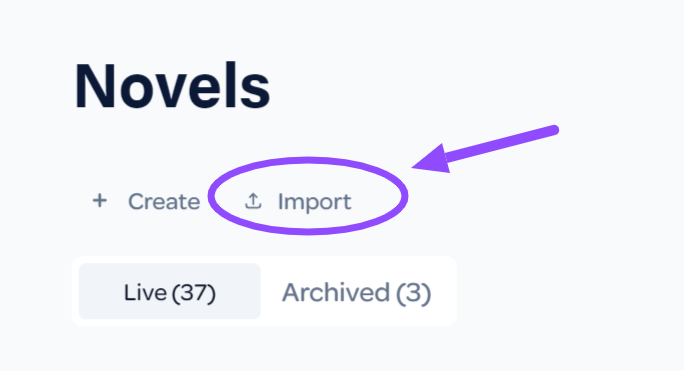Writing
How to Write a Four Act Cozy Mystery (With Downloadable Template)
There’s something special about a Cozy Mystery. They’re great escapism, and without the gore and violence so often associated with “hardboiled” detective fiction. It’s a hugely popular genre and lends an air of intimacy to the concept of crime fiction. The detectives who feature in them are often amateurs, and the events usually unfold in small, tight-knit communities, allowing the characters to remain the focus of the story and really shine.
Plotting tools are one of our most requested features, and it’s definitely on our agenda for the future. But to help you along your way until that happens, we’ve put together a repository of some of the most popular story structures, breaking down how to use them to their fullest effect. Each of them includes a downloadable template to use in your next Novlr project. Just import it into your novel, and you’ll have all the information at your fingertips.

Act 1: The Mystery Begins
Act 1 of a cozy mystery sets the scene. It will make up about 25% of the novel. You’ll want to explore your protagonist’s world, and really delve into who they are as a character.
Stage 1: Meet the Sleuth
Cozy mysteries are very story-driven, so it’s important to set up your character’s goals, wants, and motivations early on. Your setting also needs to be clear right from the start.
Unlike other genres, the protagonists of cozy mysteries don’t always need an internal motivation. Their external motivation is usually enough to push the plot forward. In this stage, the most important thing is to give your readers a sense of who your protagonist is and what drives them. The sleuth of a cozy mystery is always the focus, so you must ensure your reader is invested in them.
Stage 2: Setting the Stage
In this stage, you set the tone for your book and establish the setting. Because cozy mysteries often happen in intimate settings, there are a lot of reader expectations to consider.
The settings of cozy mysteries are usually nice places — quaint villages, cruise ships, hotels, museums, manor houses. It should be the kind of place your readers would want to visit. By setting the scene early, the shock of the inciting incident will be stronger.
You want to show your protagonist in this setting. What is their daily life like? How do they fit into your chosen location? How does it tie in or work counter to their goals? You must show what your investigator’s life is like before the inciting incident turns everything on its head.
Stage 3: Something Doesn’t Feel Right
Now that you’ve set the stage for where your story will happen and showed what your protagonist’s ordinary world is like, you want to foreshadow your story’s central mystery.
Show a subtle change in the idyllic lives of the community. Examples of this may be that a side character doesn’t show up somewhere they’re meant to. Someone receives a mysterious phone call, or even something as ephemeral as there being unusual weather.
You can easily leave this stage out, but this type of foreshadowing can add some interesting flavour to the story and get your readers invested in the plot. It shows that things are happening in the background, ready to come to light as the plot progresses.
Stage 4: The Turning Point
This is the end of Act 1 and marks the moment when the mystery begins. This is the stage where the crime is discovered, usually a dead body. The protagonist must either choose to take up the investigation or be drawn into it against their will.
Because this is a cozy mystery, the murder is usually bloodless, like poison. Although violent deaths are not uncommon, they are usually described without gore. An example might be explaining where a pistol was found after a gunshot wound, rather than going into detail about the state of the body, or describing a fall from a great height without going into the gruesome details.
The crime itself must be intentional and not a random act of violence. Cozy mystery readers like a mystery to solve, so there must be a series of clues and puzzles hinted at along the way that will lead the sleuth to their eventual conclusion.

Act 2: The Investigation Begins
Act 2 makes up about 35% of the story and introduces the reader to the investigation. Because cozy mysteries are often about unwilling or amateur sleuths, Act 2 is usually about the protagonist getting their heads around their involvement in the plot’s central mystery.
Stage 5: There Are Games Afoot
As you enter into Act 2, and the crime has been committed, Stage 5 is all about your readers discovering the reasons why your sleuth might be investigating. Unlike a classic hardboiled crime story where a detective is assigned a case, a cozy mystery requires the protagonist to have a reason to be involved in the investigation.
Reasons for an amateur sleuth to get involved often include a friend or family member being a suspect, the primary investigator on the case being inept or refusing to look at alternative theories, or the sleuth being a suspect themselves.
In this part of the story, you’ll want to clearly establish that the crime was intentional. If a body is discovered, then it needs to be clear that it was a murder, putting in place the first piece of the puzzle that will be solved as the plot progresses.
Stage 6: The Unusual Suspects
Because this is a cozy mystery, a crime will shake the close-knit community that acts as your setting to its core. With an already small suspect pool available to the sleuth, this suspect pool will narrow even further as the investigation continues.
Events that could help narrow down the possible suspects might be a lack of alibi at the time the murder was committed, clear motive for why someone may have committed the crime, easy access to the crime scene, or the resurfacing of old grudges.
As the suspect pool narrows, it will also begin to take its toll on the investigator’s personal relationships. The protagonist is not an outside investigator; they are part of the community or group. By investigating their family and friends, they must come to terms with the fact that the people they know and are close to may be more than they first appear to be.
As the investigation continues, the protagonist will unearth clues and red herrings that shine a spotlight on their community. They will develop theories, some of which will lead nowhere, and others that will set the stage for the ultimate resolution.
Stage 7: The Villain Acts
As the protagonist continues their investigation, the antagonist will actively try to throw them off the scent. The closer the protagonist comes to unmasking them, the more nervous the antagonist becomes.
Action the villain might take can include framing someone else in the community for the crime, planting false evidence, or putting the protagonist in the crosshairs of the official investigators.
This divides the community further and drives an additional wedge between the protagonist and their relationships within that community.
Stage 8: The Cycle of Theories
This stage can have many iterations and make up a good bulk of Act 2. The protagonist will develop a theory, test it out, the theory will fail, but it will help clear suspects.
Depending on the length and depth of your narrative, this stage can have multiple repetitions. But don’t overdo it. You need to make sure that you keep your story’s pacing in mind.
Stage 9: Another Turning Point
Act 2 ends with another dramatic event, just like Act 1. Despite all the theories that have come before, Act 2 ends with a conflict that turns all former theories on their head. It could be anything from a secondary crime that calls a motive into question or the death of a primary suspect.

Act 3: Rising Tensions
From Act 3 onward, the protagonist is fully invested in getting to the bottom of the mystery, and the antagonist is more determined to ensure they are not caught. Act 3 makes up 20% of the novel.
Stage 10: The Stakes Rise
With the community under threat, the protagonist becomes earnestly proactive in finding the villain. This stage is a turning point that forces the sleuth to invest themselves fully. This might include a threat against their life, a threat of violence against the community, or a friend or family arrested by the official investigators as a primary suspect.
The stakes of this section are to really pit the protagonist and the antagonist against each other. The antagonist must threaten the sleuth or their way of life, causing the sleuth to double-down on, and focus their efforts to find them.
Stage 11: The Final Theory
This represents the last theory before the killer is finally unmasked and acts as a false ending. With the sleuth’s efforts redoubled, and the antagonist on the defensive, this will suggest that the case is drawing to a close, but ultimately, this final theory will fail, leaving the villain on the loose.
This theory should represent the protagonist’s biggest failure and feel like all is lost.
Stage 12: The Final Suspects
After the failure, the protagonist must make a last-ditch attempt to unmask the villain. The sleuth will work through the last of their theories and possibly clear some of the remaining suspects before they make a discovery or unearth a final clue that reveals the identity of the villain.
At this point, the villain’s identity is clear only to the protagonist, which leads directly into the confrontation of Act 4.

Act 4: The Final Confrontation
With the rising action of Act 3 out of the way, Act 4 brings the narrative to its climax. It makes up the final 20% of the story.
Stage 13: The Lowest Point
While the protagonist knows the villain’s identity, it is not yet public knowledge. As the sleuth prepares to confront the villain, there must be an event that threatens to ensure the antagonist will not be brought to justice.
Popular tropes for this possible narrow escape for the antagonist include destroyed evidence, bribery, the death of a key witness, or simply a physical escape.
Something about this low point must make the protagonist question themselves, but ultimately, they will rise above, more determined to bring the antagonist to justice.
Stage 14: The Antagonist Revealed
Despite a narrow escape, the villain is ultimately apprehended. This is the final confrontation.
Cozy mysteries are one of the only genres where infodumps are not only expected but encouraged. The antagonist’s final revelation should tie up the mystery in a neat bow and answer all remaining questions the readers may have.
Stage 14 should reveal the villain’s identity, explain how the crime was committed, outline the protagonist’s process in coming to their conclusions, and also wrap up any other loose ends like explaining any remaining red herrings or misdirects put in their path by the villain.
This confrontation should happen in a way that plays to your protagonist’s strengths. Refer to the character development that occurred in the first stages of Act 1, and make sure that the confrontation happens in a way that fits their character.
Stage 15: Justice at Last
With the killer apprehended, the protagonist can return to their ordinary world. Their small community has been through an ordeal, but this final stage is all about restoring the status quo.
The antagonist must be brought to justice, and new opportunities open up for the protagonist in the wake of their success. This is also the time to explore both the mending of broken relationships that may have happened during the investigation and focus on the consequences of any newly formed relationships.
All remaining subplots not directly related to the crime should also be tied up in this section, leaving the community at peace, resulting in a changed world, but one that is ultimately at peace.
Download the template
You can download the template below to use it for your next project and import it directly into Novlr. If you go to the My writing page from your Novlr dashboard and click on “Import,” the template will automatically split your project into acts and sections for easy plotting!

There is no “right” way to outline a novel. That’s why there are lots of different story structures out there. The trick is finding one that works for you and adapting it to suit your needs. Once you understand the way story structure works, it’s easy to bend the rules to make something unique to you.
A good plot template can provide a springboard for your ideas, giving them fertile soil in which your imagination can help them flourish into the novel they deserve to be.